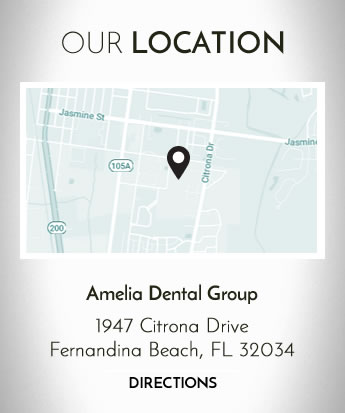Pediatric dental exams are more extensive than just looking at the teeth. First our dentist performs a review of the childs health history to determine if there is a need for any special dental care. The examination will note the health and condition of the teeth, gums, soft tissues, head and neck. Our dentist also monitors the growth of the jaws and development of the teeth, and evaluates any oral habits, such as thumb sucking. Our dentist will use all of these factors to make a diagnosis and create a custom treatment plan and instructions for home care.
Pediatric Office Cleaning
Our dentist or hygienist will clean the childs teeth to remove any plaque or calculus. Without treatment, this build up can cause gum disease and tooth decay. Our dentist will also treat the teeth with fluoride to strengthen them and make them resistant to tooth decay. Cleanings and fluoride treatments are recommended twice a year to maintain your childs dental health and prevent decay.
Oral Hygiene Instructions:
Prevention is a vital part of your childs dental care. Our expert dentist will provide instructions and tips on home dental care, such as brushing techniques. Our dentist may also provide a list of foods and habits that should be avoided.
X-rays:
Children generally need x-rays more often than adults since their mouths grow and change rapidly. They are also more susceptible to tooth decay. Dentists can use x-rays to survey erupting teeth, diagnose bone diseases, analyze the extent of an oral injury, or plan orthodontic treatment. Pediatric x-rays allow the dentist to diagnose and treat conditions that cannot be visually detected during an oral examination. If dental problems are identified and treated early, dental care will be less invasive and affordable.
Our dentists are careful to minimize the exposure of your child to radiation. Lead body aprons and shields help protect the child’s body, and modern dental equipment is designed to focus the x-ray beam only where needed and filter out unnecessary x-rays. Use of digital sensors and x-rays help minimize radiation exposure.
For children with a high risk of tooth decay, the American Academy of Pediatric Dentistry recommends x-ray examinations every six months to detect cavities developing between the teeth. Children with a low risk of tooth decay require x-rays less frequently.
Panoramic x-rays:
Panoramic x-rays may sometimes be necessary to view the child’s entire mouth and jaws. It shows any permanent teeth that are missing, abnormal growth, extra teeth or other oral issues. A panoramic is typically scheduled when a child’s 6th year molars erupt and then once every 3-5 years after that. Sometimes a panoramic may be recommended if there has been physical trauma to the jaw.
Sealants:
Our dentists use sealants to help prevent tooth decay. Sealants are made of clear plastic and are applied to the chewing surface area of the tooth. Some teeth tend to have depressions and grooves which are difficult for the child to clean. Sealants are used to fill these depressions to deter tooth decay. Application of the sealant is quick, painless, and can be effective for many years if your child practices good oral hygiene and avoids biting hard objects.
Tooth Colored Fillings:
Tooth colored fillings are usually used to enhance the front teeth where appearance is the most important. They are also used to also repair chipped or decayed teeth anywhere in the mouth. The benefit of tooth colored fillings is that they are hard to distinguish from the natural teeth color.
Crowns:
Baby teeth hold the spacing for the permanent teeth and help guide the permanent teeth into position. Baby teeth allow for normal development of the childs jawbone and muscles. When baby teeth fracture due to decay or trauma and a filling is required on more than one surface of the tooth, the dentist may recommend the placement of a crown over the baby tooth instead of a filling. The filling may decay again, break or wear out, and the tooth will then require another restoration. A crown is more durable than a filling, and should last until the child’s adult teeth come in. In many cases the crown results in less expense to the parent and less trauma to the child.
Stainless Steel Crowns:
Stainless steel crowns are silver colored caps that cover the whole tooth. Dentists favor stainless steel crowns for restoring back teeth with extensive decay or decay in between the teeth. Stainless steel crowns are the most durable, and last until the baby tooth falls out around the age of 12.
Pulp Treatment:
Endodontic or root canal treatment focuses on the pulp of the tooth. The pulp contains nerves and blood vessels that supply nutrients and oxygen to the tooth. Endodontic treatment is performed in order to save the tooth when the pulp gets infected or injured. During treatment, the hollow area inside the tooth is cleaned, disinfected and filled.
When the pulp has been injured by trauma, decay or other causes, endodontic treatment is usually the best way to try to save the tooth. Unless a childs tooth is about to fall out, a dentist may recommend endodontic treatment on a child’s primary(baby) tooth. Without treatment, the child will experience pain or discomfort, and infection may result. Early extraction of the primary tooth is usually not advisable because primary teeth are necessary for chewing and for learning proper pronunciation during language development. Also if a baby tooth is extracted too early, neighboring teeth can shift and occupy some of the vacant space making it difficult for the permanent tooth to grow in properly.
Symptoms that indicate a need for endodontic treatment can include toothache, sensitivity to hot and cold, or if the pulp has been exposed from fracture and the child is experiencing sensitivity. The type of endodontic treatment that may be recommended depends on how seriously the pulp is affected, an evaluation of the tooth and the results of an X-ray.
Extractions:
Primary teeth or “baby teeth” play an important role in a child’s life for proper chewing, speaking and speech development. Primary teeth also maintain proper spacing for the permanent teeth and help guide the permanent teeth when they finally erupt through the gums. So whenever possible, dentists try to preserve the natural baby tooth when treating for decay or damage. However, there are times when it is necessary to remove a baby tooth. Extraction of a tooth may be necessary in the following situations:
- The tooth is too damaged or decayed to be restored
- The tooth fails to loosen and fall out on its own and blocks the adult tooth from emerging
- Teeth need to be removed due to crowding or for orthodontic purposes
- Impacted or un-erupted wisdom teeth
Once a tooth has been removed, neighboring teeth may start to shift, resulting in problems with spacing and growth and development. To avoid these problems, the dentist may place a space maintainer.
Space Maintainers:
Space maintainers are necessary when a primary tooth(baby tooth) has been lost prematurely. A space maintainer holds open the gap where the permanent tooth will come in, and avoids shifting of the neighboring teeth. Space maintainers can be fixed or removable, and they can be unilateral(fixed to one side of the mouth) or bilateral(fixed to both sides of the mouth). For younger patients, fixed space maintainers are usually recommended.
Nitrous Oxide:
Also known as laughing gas, nitrous oxide is a type of sedation that can be administered when a child is scared and not able to relax. It is also used with patients who have sensitive gag reflexes.


